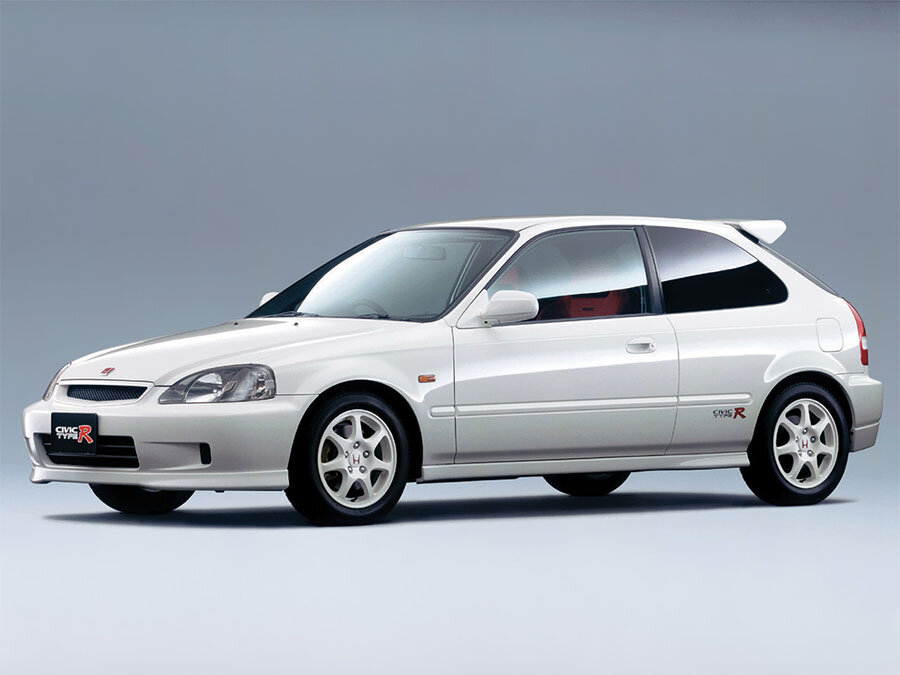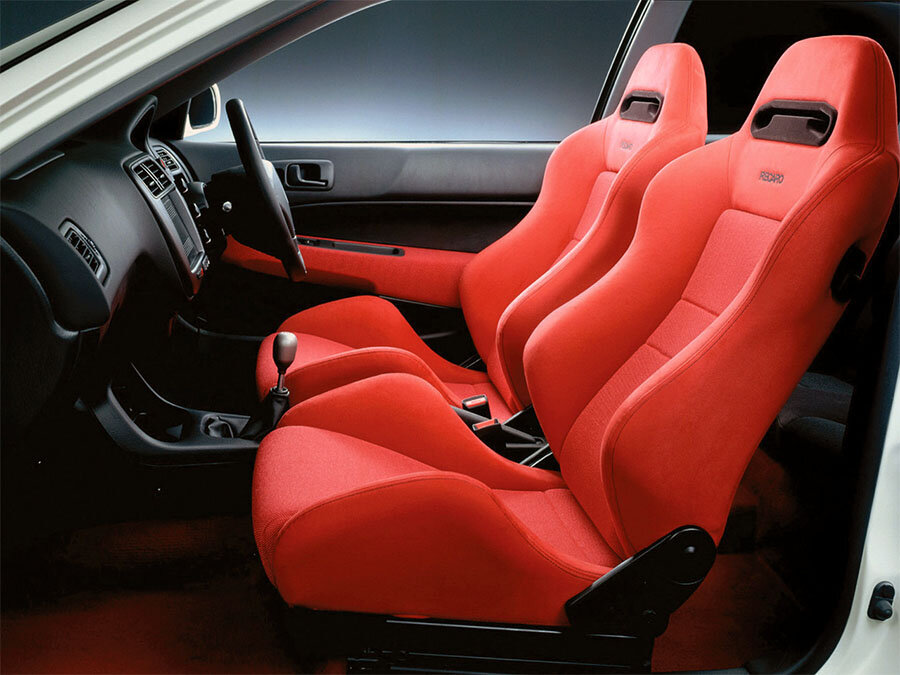Guide: A New Hot Hatch King - a Historical & Technical Appraisal of the Honda Civic EK9 Type R
/BACKGROUND
In 1979, Honda returned to Grand Prix motorcycle racing after more than a decade in the sporting wilderness. A Formula 2 engine supply deal followed in 1980 and Honda-powered Ralts went on to win the F2 championship in 1981, 1982 and 1984.
In 1983, Honda moved up to Formula 1. Collaborations with Williams, Lotus and McLaren ultimately yielded 69 victories, five Driver titles and six Constructor championships.
Having initially quit as an F1 constructor back in 1968, Honda’s second coming proved a remarkable success.
To capitalise on their Formula 1 champion status and move the brand further upmarket, Honda launched the mid-engined NSX in 1989. The NSX was technically and dynamically superior to any of its European rivals. In the USA, it was sold under Honda’s premium Acura brand.
To complement the standard NSX, which had been conceived as a practical and comfortable mid-range supercar, Honda launched a hard-edged high performance derivative in 1992. The resultant NSX Type R featured uprated suspension, a blueprinted engine, special gearbox ratios and a conspicuous lack of luxury equipment to reduce weight.
In 1995, the Type R treatment was applied to the Integra DC2 which was similarly met with critical acclaim.
The Integra was an upmarket version of the Civic, Honda’s best-selling four-wheel product.
Within two years of the Integra Type R’s arrival, an uprated high performance Civic was introduced.
By this time, the Civic was in sixth generation guise. The model had been introduced back in 1972 and proved a breakthrough offering for Honda. Importantly, it was the firm’s first model to sell in any great numbers outside of Japan.
As per earlier iterations, this latest Civic (introduced in 1995) was sold with a bewildering array of engines, body styles and trim levels.
However, clearly the sportiest and most desirable iteration was the Type R that Honda introduced in August 1997 for the 1998 model year.
Unlike the Integra Type R (which was available internationally), the Civic Type R was surprisingly only offered in the Japanese Domestic Market (JDM). In this respect, it was similar to the NSX Type R which was also only sold at home.
Assembly took place at Honda’s Suzuka factory.
CHASSIS
Dubbed EK9, the Type R was based on the EK4 Civic SIR which was itself a three-door Hatchback variant produced exclusively for the JDM market.
To improve rigidity, the Type R’s pressed steel monocoque body shell was extensively seam welded.
As usual, the wheelbase measured 2620mm and front-wheel drive was employed.
The suspension layout comprised double wishbones all round. Shorter springs and stiffer dampers were joined by thicker anti-roll bars and strut braces at either end. Ride height was significantly lowered and the whole car was much more stiffly sprung.
282mm ventilated discs were fitted up front and solid 260mm discs at the rear. ABS was standard along with power steering.
New seven spoke alloy wheels measured 6 x 15-inches all round. They were originally painted Championship White, equipped with red on white Honda centre caps and shod with Bridgestone Potenza tyres.
Track was an identical 1480mm at both ends.
A standard 45-litre fuel tank was installed under the boot floor.
ENGINE / TRANSMISSION
Under the hood was a transversely mounted inline four cylinder engine of 1.6-litres.
Like some other Civic variants, the Type R motor featured dual overhead camshafts, four valves per cylinder and wet-sump lubrication. It was also equipped with Honda’s renowned VTEC variable valve timing and lift electronic control system which combined two different camshaft profiles.
Displacement was 1595cc thanks to a bore and stroke of 81mm and 77.4mm respectively.
The engine block was formed in cast-iron and the head was light alloy.
Uniquely, the B16B 98 spec. R power unit fitted to the EK9 was blueprinted and riddled with special high performance upgrades. These included a hand ported and polished cylinder head with lightweight inlet valves and high lift inlet valve springs, wide-angled high-lift camshafts, special high compression low friction pistons with lightened connecting rods, high lift dual-layered exhaust valve springs, a fully balanced custom crankshaft, a high RPM-type intake manifold and platinum spark plugs.
The compression ratio was 10.8:1.
Engine management was courtesy of Honda’s PGM-Fi system.
With 182bhp at 8200rpm, from a per-litre perspective, the Civic Type R had the highest performing normally aspirated engine available.
The torque rating was 118lb-ft at 7500rpm.
Transmission was via a close ratio five-speed manual gearbox, single-plate clutch and front helical limited-slip differential.
BODYWORK
Styling-wise, the sixth generation Civic was arguably more conventional than some of its predecessors. It was ultimately offered as a three-door Hatchback, a slightly larger two-door Coupe, a four-door Sedan and a five-door Estate.
The Type R was produced exclusively in the diminutive three-door Hatchback body style.
Compared to other models in the range, the Type R was equipped with a custom body kit that included a deep front spoiler, side skirts and a roof-mounted rear wing, all of which were body coloured.
Tinted glass was standard. In typical Type R fashion, red-backed Honda emblems were fitted.
Civic Type R decals were applied to the tailgate and ahead of the rear wheels.
To save weight, most of the bodyshell’s sound insulation was deleted.
INTERIOR
Inside, this latest factory hot rod followed the by now well-established Type R philosophy.
Most obviously, the standard Civic’s front seats were ditched in favour of Recaro buckets upholstered in bright red fabric. The door cards were trimmed to match as was the carpet.
Other special equipment unique to the EK9 variant included red Type R-branded floor mats, a titanium shift knob, a leather-rimmed Momo steering wheel, a Type R badge on the centre console, new pedals and a carbon-effect fascia for the instrument binnacle.
Instrumentation comprised a 10,000rpm rev counter, a 180mph speedo, a combined read out for fuel / water temperature and an array of warning lights.
Standard equipment included electric windows, electric mirrors and airbags for both driver and passenger.
Grey fabric rear seats were imported from the regular Civic.
OPTIONS
Honda initially offered a choice of three colours: Championship White, Vogue Silver Metallic or Starlight Black Pearl (sometimes known as Flamenco Black Metallic).
Optional extras included remote central locking, a CD player, electric folding mirrors, air conditioning and drilled aluminium pedals.
CIVIC TYPE R MOTOR SPORTS EDITION (N1)
In addition to the standard Civic Type R, Honda also produced a Motor Sports Edition which served as the platform for an N1 racing version.
As these cars were conceived for competition use, they came with a very basic specification.
From the outside, they could be identified by inexpensive steel wheels which it was assumed would be switched out for the purchaser’s rims of choice.
Similarly, as the interior was expected to be gutted, the Motor Sports Edition featured a standard grey fabric interior from the EK variant and not the Recaro seats with matching door cards found in the regular Type R.
As anti-lock brakes were not permitted by the N1 regulations, the ABS system was absent.
To save weight, Honda deleted the standard car’s electric windows, electric mirrors, power steering, audio system, floor mats and what was left of the sound insulation. A standard non-airbag steering wheel was fitted along with a conventional gear knob.
Under the hood, the engine was fitted with a lightweight crank pulley.
WEIGHT / PERFORMANCE
For the regular Type R, Honda quoted a weight of 1040kg and 0-62mph time of 6.2 seconds.
Top speed was 140mph.
The VTEC engine’s two different camshaft profiles offered either low speed driving with excellent fuel economy or more aggressive performance further up the rev range at the expense of efficiency.
1999 MODEL YEAR FACELIFT
Twelve months after production began, Honda gave the entire Civic range a facelift. Production began in August 1998 for the 1999 model year.
New equipment included a front bumper with brake cooling ducts, a wider front intake grille and clear instead of amber tail lights. Less easy to spot were the subtly reshaped headlights which required new fenders.
Inside, there was a completely redesigned central control panel and a gear gaiter with red instead of black stitching.
Honda also added a fourth exterior colour choice: Sunlight Yellow.
2000 MODEL YEAR CIVIC TYPE RX
For the 2000 model year (production of which ran from August 1999 to August 2000), Honda sold the Civic Type R with a higher specification. Dubbed the Type Rx, these last-of-the-line variants came with the previously optional CD player, electric folding mirrors, air-conditioning, remote central locking and drilled aluminium sports pedals fitted as standard.
A new feature was a polished carbonfibre-style shroud for the central control panel.
END OF PRODUCTION
Type R production ended in August 2000. By this time, 16,241 examples had been completed.
Build totals were as follows:
1998 Model Year (chassis prefix EK9-100): 7007
1999 Model Year (chassis prefix EK9-110): 4009
2000 Model Year (chassis prefix EK9-120): 5225
These figures include 200 of the N1 specification Motor Sports Edition cars.
A replacement Type R based on the seventh generation Civic platform was released in 2001.
Text copyright: Supercar Nostalgia
Photo copyright: Honda - https://global.honda/







































